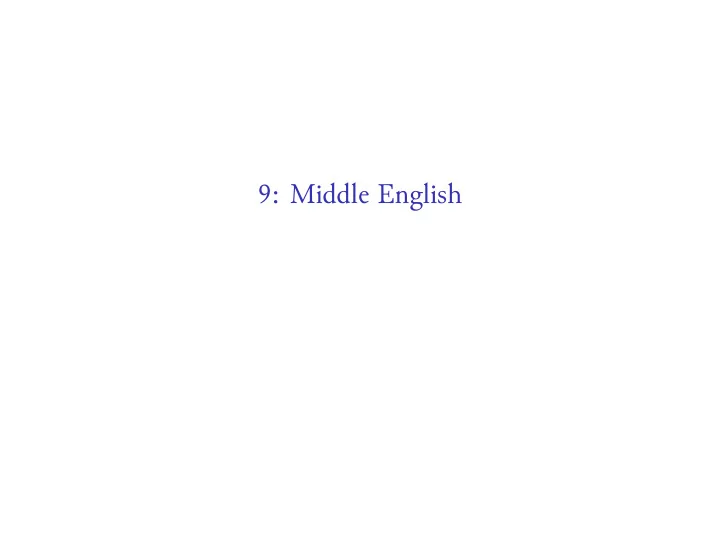

9: Middle English
Side by Side Old English Middle English Fæder ure þu þe eart on heofonum, Oure fadir that art in heuenes, si þin nama gehalgod. halewid be thi name. Tobecume þin rice. Thi kyngdoom come to. Gewurþe ðin willa Be thi wille don on eorðan swa swa on heofonum. in erthe as in heuene. Urne gedæghwamlican hlaf syle us Ȝyue to vs this dai oure breed ouer todæg othir substaunce and forgyf us ure gyltas, and forȝyue to vs oure dettis, swa swa we forgyfað urum as we forȝyuen to oure dettouris. gyltendum. And lede vs not in to temptacioun And ne gelæd þu us on costnunge but delyuere vs fso yuel. ac alys us of yfele.
Differences fsom Old English ▶ Morphological: inflectional levelling ▶ Syntactic: Development of a more fixed word order ▶ Lexical: French and Norse borrowings ▶ Orthographical: Anglo-Norman spellings (see next slide)
Orthographical Innovations ▶ e for /ǣ/ ▶ ea for /æ/ ▶ o, ue, u for /ø/ ▶ y for /i/ (following the unrounding of /y/ described below) ▶ u for /y/ in dialects where that sound survived ▶ o, ou, ow for /u/ ▶ ay, ey, oy for /ai, ei, oi/ ▶ aw, ew, ow for /au, eu, ou/ ▶ qu for cw ▶ ch instead of c for /tʃ/ ▶ v for voiced f ▶ ȝ for /ʝ/ (in OE Ʒ was interchangeable with g) and sometimes for word-final /ts/ ▶ ȝ for /χ/, leaving h for /h/ ▶ wh for hw (but qu in the north) ▶ sch instead of sc for /ʃ/ ▶ ð disappeared in c13; th introduced as an alternative for þ ▶ uu, vv, w instead of ƿ for /w/
Differences fsom Modern English
Differences fsom Modern English ▶ Phonological: Great Vowel Shifu ▶ Lexical: Borrowings fsom Latin, Greek, many other languages ▶ Syntactic: further regularization of word order ▶ Orthographical: abandonment of ȝ, þ
Middle English Phonology and Pronunciation ▶ The vowels are like German vowels ▶ The consonants are not (High German Consonant Shifu) ▶ Dutch and Low German come closest, but these lack /θ, ð/
Recommend
More recommend